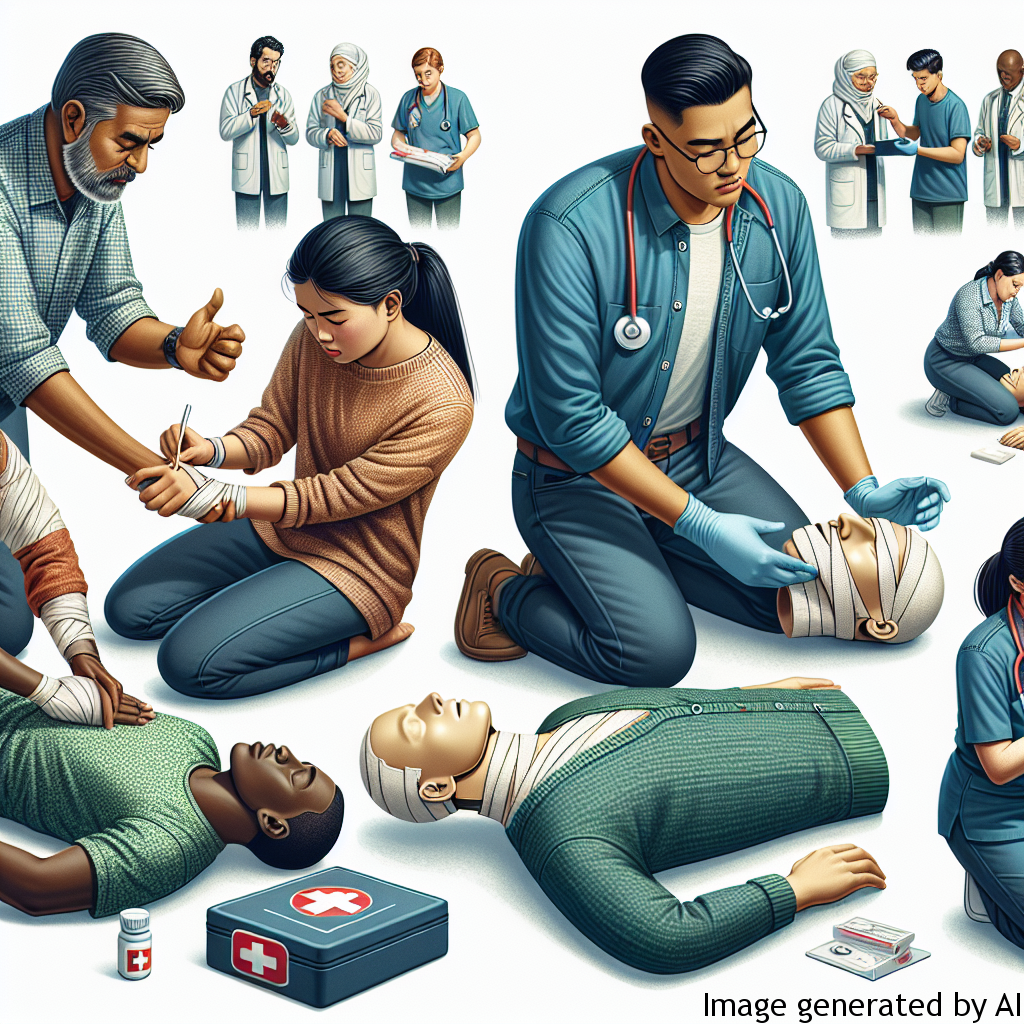Introduction
First Aid is the initial assistance or treatment given to someone suffering from an injury or illness. The main aim of first aid is to preserve life, prevent the situation from getting worse, or to assist in the recovery process. Applying effective first aid techniques during a medical emergency can mean the difference between life and death. This article will focus on the basics of first aid techniques and their importance in daily life.
First Aid Techniques
First Aid Techniques encompass a broad range of methods used to manage various types of injuries and health conditions. The following are some of the fundamental first aid techniques that everyone should know:
Cardiopulmonary Resuscitation (CPR)
CPR is a life-saving technique used in emergencies where a person’s breathing or heartbeat has stopped. This technique involves chest compressions combined with artificial respiration (mouth-to-mouth resuscitation) to keep oxygen and blood flowing and to preserve brain function until further measures are taken to restore spontaneous circulation.
Using an Automated External Defibrillator (AED)
In instances of cardiac arrest, knowing how to use an AED is critical. An AED is a portable device that can check a person’s heart rhythm and deliver an electric shock if necessary to restore a normal rhythm.
Choking Aid
When an individual is choking, it means that their airway has been partly or wholly blocked, causing difficulty breathing. The Heimlich manoeuvre is a well-known technique to help clear a person’s airway.
Importance of First Aid Techniques
Knowing the correct first aid techniques is not only essential for healthcare professionals but everyone. It helps ensure that immediate care is provided to injured or ill individuals which can help reduce the severity of an injury or even save a life.
Tips for Applying First Aid Techniques
Stay Calm and Asses the Situation
During an emergency, it’s crucial to stay calm and quickly assess the situation. It is crucial to ensure the scene is safe for you before providing help and to identify what is wrong with the individual and whether they require immediate medical attention.
Call for Help
Don’t hesitate to contact emergency services if you think the individual’s life may be in danger. Provide them with a clear explanation of what happened and the current state of the person.
Begin First Aid
If you’re sure about what medical attention is needed, you can start the first aid. Don’t move the person unless necessary and comfort the person as much as possible while waiting for professional help.
Conclusion
Having knowledge about simple first aid techniques can make a significant difference in emergency situations. It’s about acting promptly but effectively with what you’ve got to prevent a bad situation from getting worse. Therefore, everyone is encouraged to take first aid training courses to be better prepared to handle emergencies both in and out of home. Remember, the life you save may even be that of a loved one.

